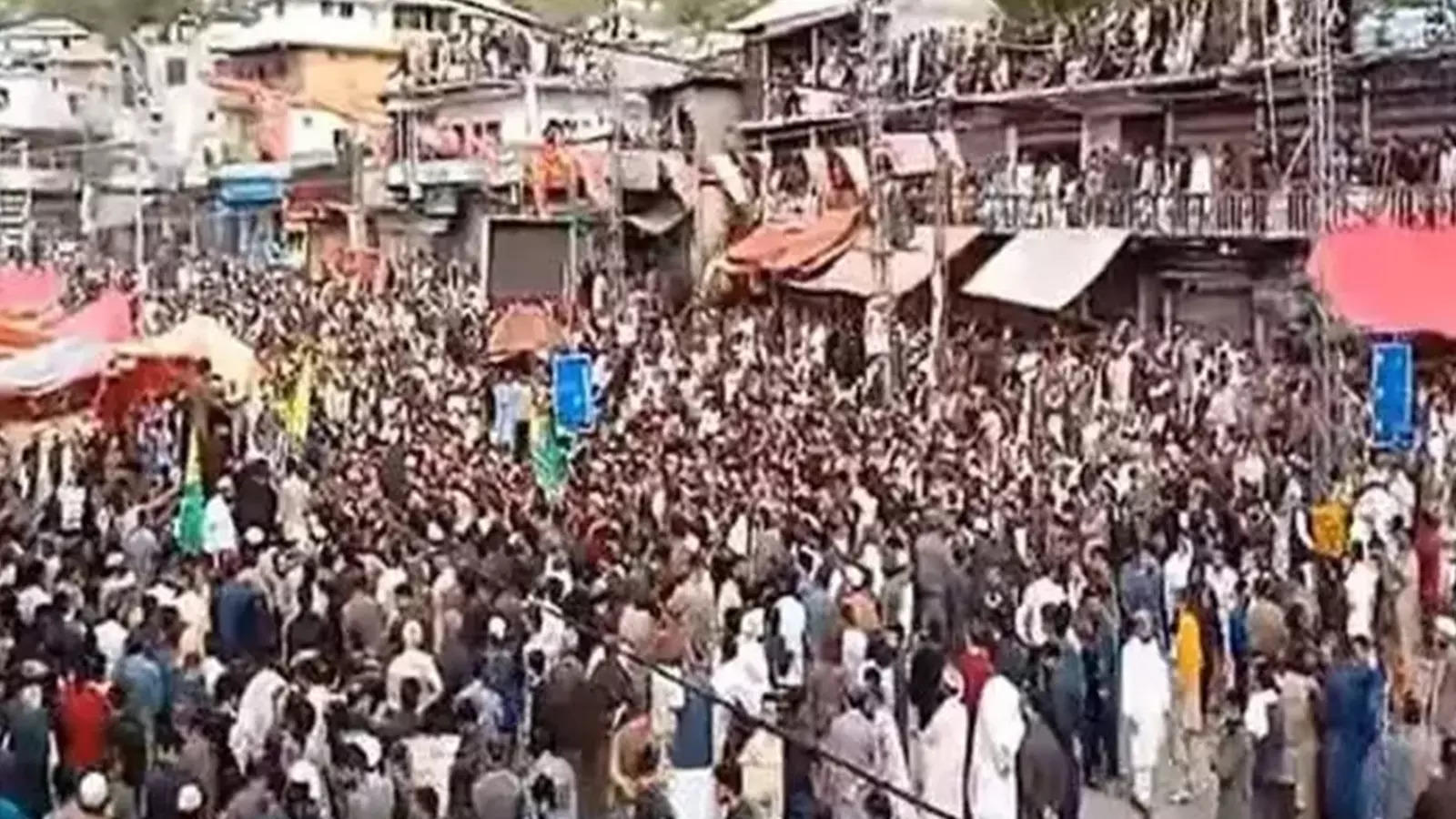As protests in Pakistan-occupied Kashmir (Pork) enters its fourth day with tensions rising and no end in sight.Demonstrators are at People’s Action Committee (AAC) is protesting against soaring prices of wheat flour and exorbitant electricity bills, leading to a complete halt in daily activities in the area.
overall view
overall view
- The protests quickly escalated from peaceful demonstrations to violent clashes with law enforcement, resulting in the death of one police officer and the injury of more than 100 people, mostly police officers.
- The situation has forced the government to deploy military rangers and suspend telecommunications services to control dissent.
why this is important
- The ongoing strike has brought daily life to a standstill, with markets, educational institutions and transport services suspended.
- Mobile and internet services have also been affected in different parts of Pakstan state, including the towns of Bhimber, Mirpur and Bagh
- The situation highlights the region’s unstable political climate and local residents’ dissatisfaction with economic conditions and governance.
- The ongoing unrest not only disrupts life in Pakistan-occupied Kashmir, but also poses a major challenge to the stability of the Pakistani government in the region.
- The AAC’s demands reflect deep-seated economic frustrations that they see as exacerbated by government negligence and elitism.
what are they talking about
“We are deeply concerned about the situation in AJK. Unfortunately, in the midst of chaos and dissent, there are always those who are eager to score political points,” Pakistani Prime Minister Shehbaz Sharif said, stressing his concern over violence and lawlessness. Adopt a zero-tolerance policy.
Read between the lines
- Reports indicate that Pakistani security forces used excessive force against peaceful demonstrators. Tear gas and bullets were reportedly used against unarmed civilians exercising their right to protest.
- The government’s response has been marked by a heavy security presence and communications blackouts, suggesting a strategy focused more on repression than dialogue.
- Such an approach may only deepen the resolve of the protesters and may lead to further alienation of the people of Pakistan-occupied Kashmir.
what’s next
- The immediate future depends on the outcome of planned high-level discussions. Effective government action and meaningful engagement with protest leaders could lead to a de-escalation of tensions.
- However, if these negotiations fail to address the core concerns of the protesters, Pakistan-occupied Kashmir may see the current unrest continue or even intensify.
(Based on input from each agency)








